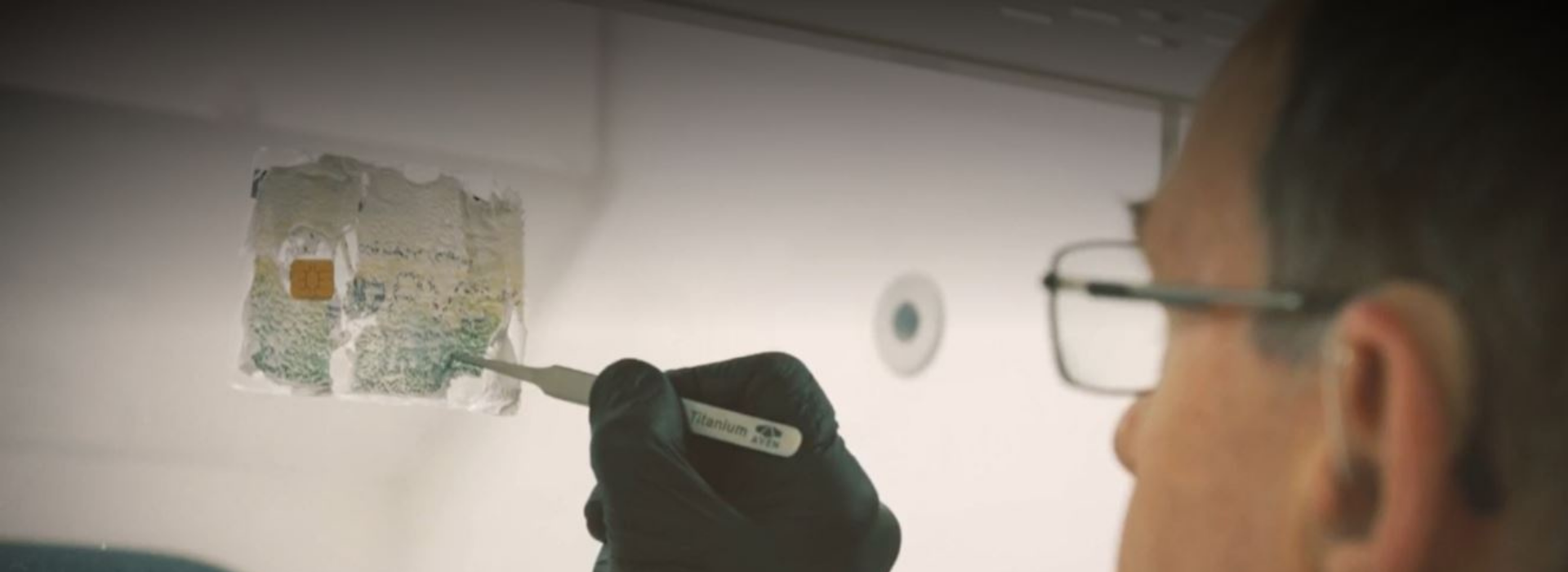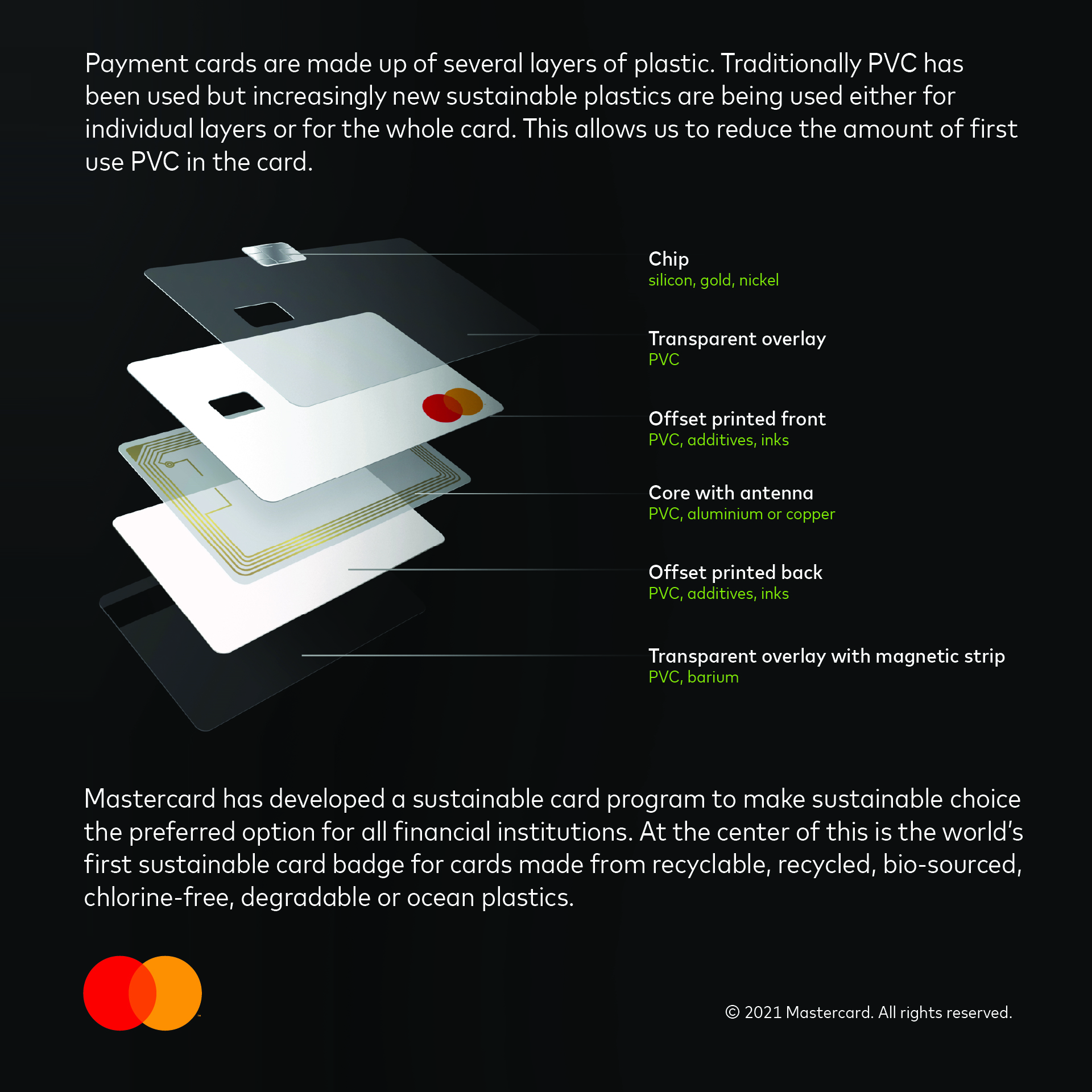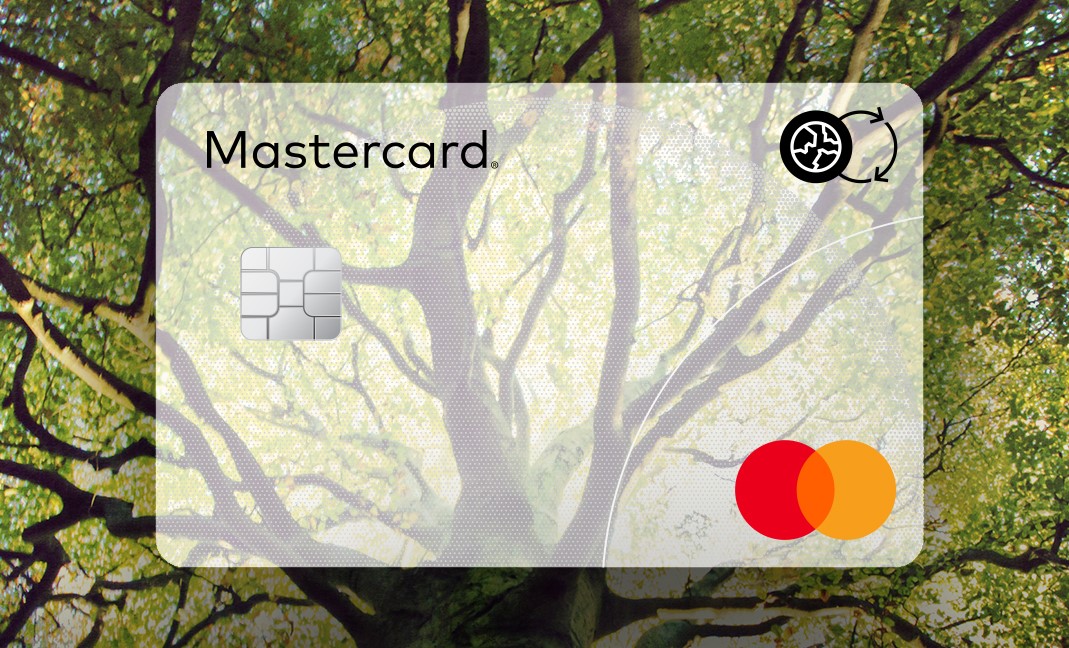Rethinking paying with plastic
December 6, 2021 | By Sophie Hares
The vast majority of the 6 billion payment cards in the world are made from first-use polyvinyl chloride (PVC) plastics. Joe Pitcher spends a lot of his days thinking about these cards — and what might replace them.
Card manufacturers making more sustainable cards send their samples to Mastercard’s DigiSec Lab in northern England, where Pitcher works. First, he and the DigiSec team try to destroy them, feeding them into machines capable of flexing, snapping, gnashing and grinding. They then use a diamond-edge saw to expose a cross section of the card, scrutinizing it under a scanning electron microscope for imperfections at the micron level — that’s one-millionth of a meter — and using an infrared spectrometer to determine its precise chemical composition.
The goal is to put each card through its paces to determine whether it’s worthy of Mastercard’s stamp of approval as a sustainable card. To earn that right, the cards must meet stringent criteria regarding not only their materials but the amount of energy consumption, carbon emissions and waste involved in production, explains Pitcher, Mastercard’s director of industry standards.
“They’re saying to their customers and competitors that they’ve chosen a sustainable product that Mastercard has independently verified,” he says. “They’re not just green washing.”
With billions of metric tons of plastic in landfills and vast floating garbage patches in the ocean, ecoconscious consumers are striving to banish first-use plastic from their lives — from straws and water bottles to grocery bags — and they are increasingly demanding that brands behave in more sustainable ways as well. The 6 billion cards in circulation make up less than 0.01% of the world’s total annual plastic use, according to Mastercard analysis, but a growing number of banks are exploring ways to make a dent.
Mastercard is now working with 148 financial institutions in 46 countries to develop cards made from more sustainable materials, such as recycled ocean plastic or bioplastics derived from Thai sugar or Nebraskan corn. (That’s putting your money where your mouth is.)

To make it easier for banks to find these greener alternatives to first-use PVC, Mastercard last year launched a directory that highlights the pros and cons of a variety of chlorine-free, biosourced and recycled materials. The company also now offers a badge to help consumers identify these more sustainable cards.
These alternatives are catching on. In the U.K., Starling Bank says it explored materials from wood to bioplastics before it decided to switch to recycled plastic sourced from the printing and packaging industry.
As the first bank in the U.K. to issue recycled plastic Mastercard debit cards, the digital bank has sent out nearly 1 million already, and the teal and navy cards will soon sport the Mastercard sustainable card badge as well.
“There’s no deterioration in quality or technical capability. They simply allow people to bank greener,” says Mark Day, Starling’s art director, who helped roll out the new cards.
Spain’s Banco Santander says it plans to cut its carbon footprint and save 60 tons of plastic each year by switching all of its payment cards in Europe to more sustainable materials.
Despite sustainable cards’ progress, they are just a part of the complex puzzle companies face in recycling and reducing plastics, Pitcher says. It’s still a major challenge to recycle traditional PVC cards and even cards made from recycled plastics or other materials — that’s because of the combination of materials in cards, including the metals in the chip and antenna.
To that end, in partnership with Giesecke+Devrient, Mastercard is developing a toolbox of recycling services for banks to help their customers more sustainably retire their cards.
Mastercard is also funding research in plastic recycling at the U.K.’s University of Manchester, which Pitcher hopes will have a much broader impact than simply finding new ways to dispose of old cards.
“We’re not necessarily going to change the world just by fixing the problem we create,” Pitcher says. “If we can put out a signal to the market that this is important and that we’re taking responsibility to reduce our impact, we can hopefully move the industry — and move society — forward.”
